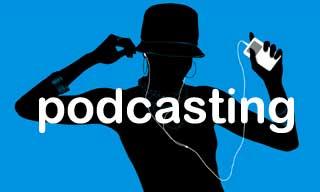I recently had lunch with someone that got me thinking about video blogging. I still cringe at the word "blog" so "vlog" is no better. I'm a little more comfortable with the term podcasting. Maybe I'm starting to fall for all that trendy mac advertising.
Anyway, podcasting is catching on. Generally speaking, a podcaster wants to be heard and/or seen. Regardless of the type of content a podcaster produces, the act of releasing it on the Internet means the author has a desire to engage someone else with that content. The current distribution method for that content works only for those within the blog culture... Actually, more accurately, it only works for those within the podcasting culture, which is a blogging sub-culture. The idea is nifty, but as it stands it will always be a nitch.
On the flip side of the Internet, we have a completely different culture of entertainers bringing audio and video to the Internet populous through Shoutcast radio and TV. Shoutcast is a much more commercial minded solution that appeals to a broader audience of Internet users. As I compose this post, there are more than 124,000 users listening to shoutcast radio. Generally speaking, listerns and viewers of Shoutcast and ShoutcastTV are simply looking for entertainment and do not consider themselves part of a sub-culture - at least not the way podcasters do.
You might already see where I'm going with this. Think of the postcasting community as the entertainment media provider and the shoutcast community as the general audience. We don't have to invent a lot of technology to bridge the gap between the two.
First, take a video or audio blogging service and start tracking metrics. One metric could be the number of times an entry is listened to from start to finish. Another metric could be user submitted votes for the quality of that content. Combine all of these metrics together to form a ranking algorithm (not entirely unlike how google ranks websites). Now we have all of this podcaster generated content ranked in terms of potential mass appeal.
Next, take this ranked content and build a dynamic playlist. More popular content shows up on the playlist more often. The playlist should probably contains relatively recent content. Adjust the idea here and there - find what works.
Finally, broadcast that playlist as a shoutcast stream. If there is enough content to justify it, start breaking the content down into multiple channels based on what tags are associated withe the entries.
A service provider could slip a few ads inbetween content pieces and build a working business model. More inspiring, part of this ad revenue could trickle down to the podcasters that originally created the content. Then we would have a model much like broadcast television, only we no longer have all of the programming and content creation restricted to the discretion of some silly corporation.
It's just an idea... It seems like a logical next step.
Subscribe to:
Post Comments (Atom)



No comments:
Post a Comment